
Hello, PianoTell members and readers!
TL; DR (please scroll down for the links to my 'Google Drive' repository and my YouTube channel)
I design pianos (as a hobby) as you can see on the photos. My journey started when I was 14 years old when I saw a real acoustic grand piano in my home town's local theatre.
Of course, I had seen pianos on the TV, but never up-close and under my hands. I opened that grand piano and its details, especially the keys, almost immediately grabbed my attention.
I got extremely puzzled about the discrepancies that big piano and its keyboard had. I tried to "play" something (I had no idea how to play piano as I started to take drums lessons in the same theatre – that is how I had the chance to come close to that grand piano) and it was obvious to me something was not quite right…
The re-Design of the Standard Piano Keyboard
In the following years I had a schoolmate who had an upright piano she had started learning to play at age 5 (I found that a bit shocking to be honest). We spent hours and hours every week when she practised for competitions and stage performances so I had a chance to look at her hand movements and take measures and observe. Overall, I started to search for answers to the questions emerging in my head.
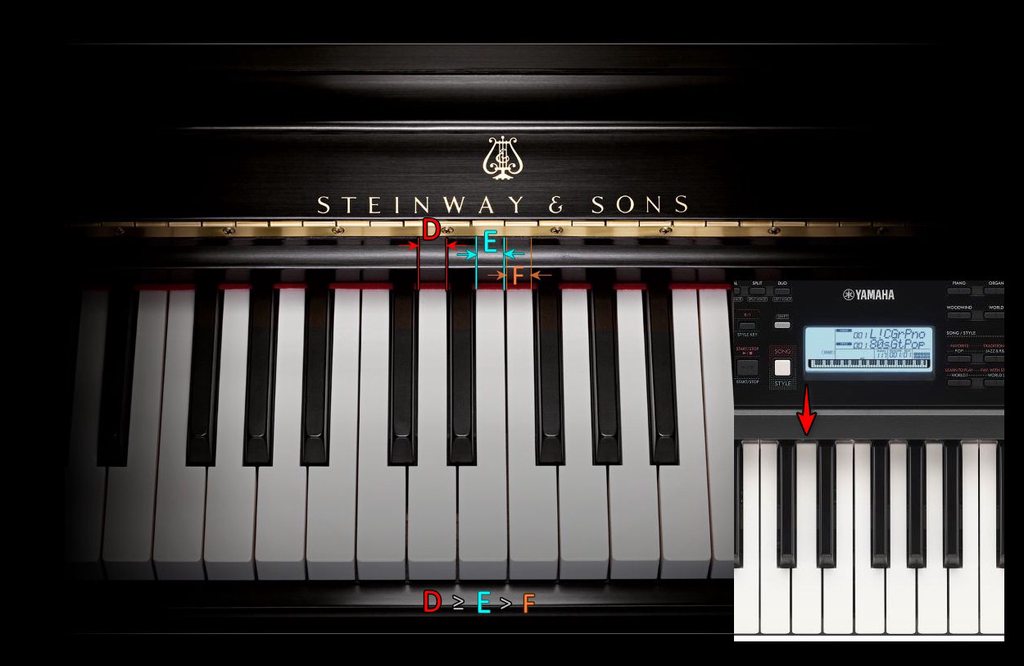
• the discomfort of the proportions in standard piano keys •
I could not grasp the reasons for such unpleasant discrepancies and overall discomfort when touching the keys ('blacks' on a elevated level up)… especially when Pianos were considered to be a luxury music instrument (more or less).
I developed some ideas about re-designing the piano keyboard but never spoke to anyone about it (besides sharing my thoughts with my piano player schoolmate) at that time till I graduated and went to Uni. Internet gave me access to many sources of info so the re-design began. I wanted to somehow make the 'equalised' (equally tempered design… if you'd like the pun) piano keyboard. So I did my solution:
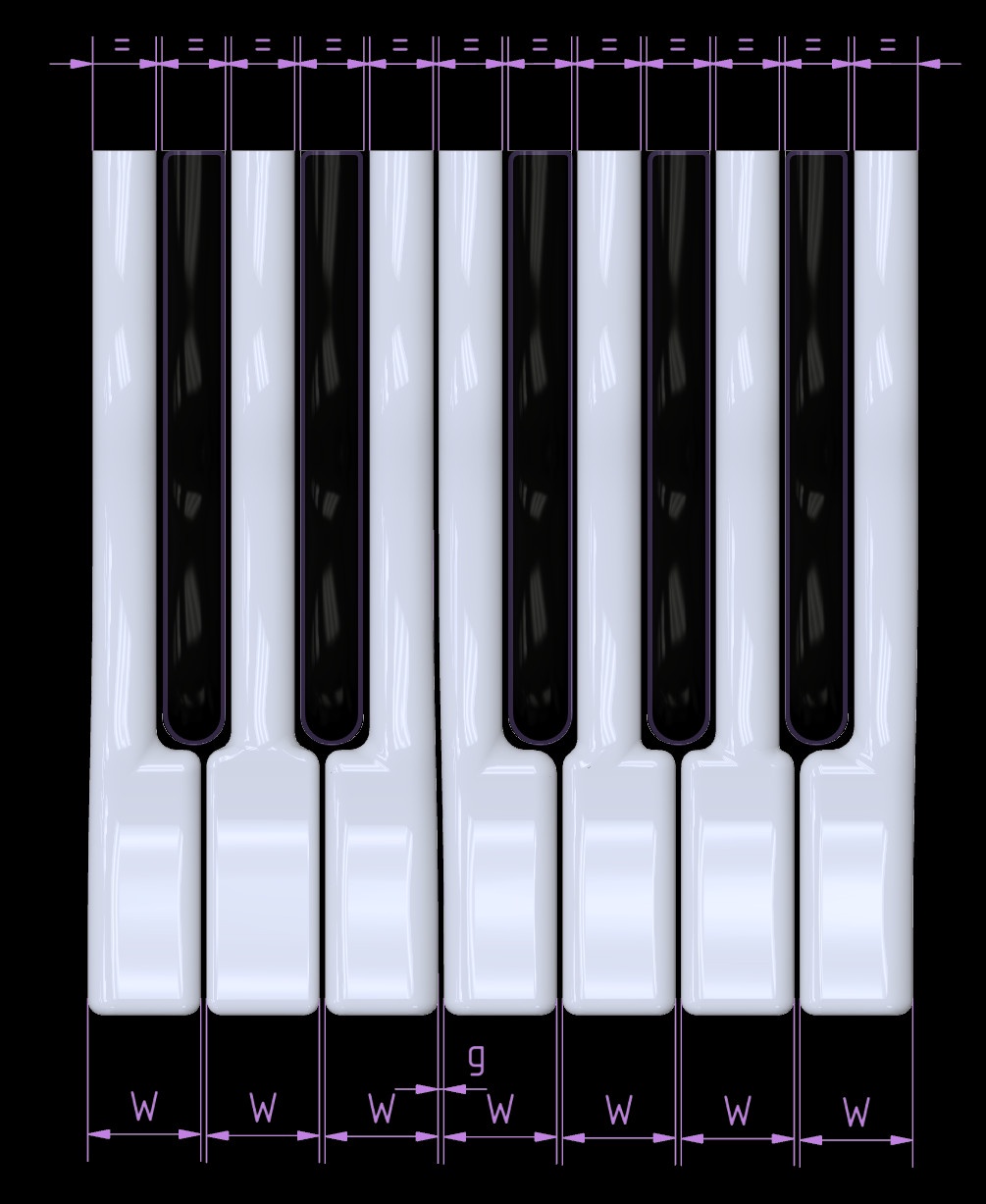
• equally tempered standard piano keyboard •
On one hand, all respective widths are equal, and on the other – the keyboard could be made narrower for smaller hands! Everyone involved in such measurements knows that usually piano keys get divided in two groups: [C to E] and [F to B]
It leads to a deviation between the narrow areas juxtaposed to the front\wider areas between the keys [E] and [F] – the gap is not dead straight. My redesign 'splits that difference' sharing it between the two vertical gaps, namely between [В] and [C] and the already mentioned [E] and [F]. We are talking about a fraction of a mm (millimetre) depending on the chosen overall width\span of the hand (small or big "octave" span).
That was one of the main reasons. The next reason was the uncomfortable separation of elevation between both type of keys 'black' and 'white'. If you know the history of how early pianos were constructed as a set of levers and that there were no 'black' keys (who knows why called "accidentals" – no such thing in Pythagoras time) and how the 'black' pentatonic set of keys were added… by the way it is one of the reason in Germany the key [В] is known as [H] but that could be discussed later. So, I fixed that as well.
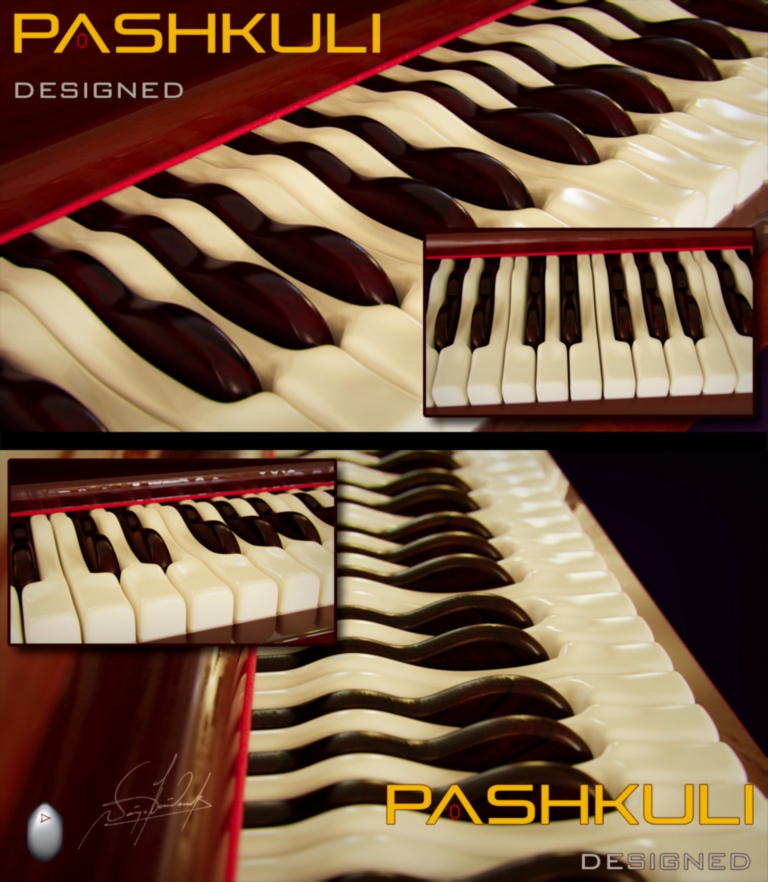
• the re-Design of the Standard piano keyboard •
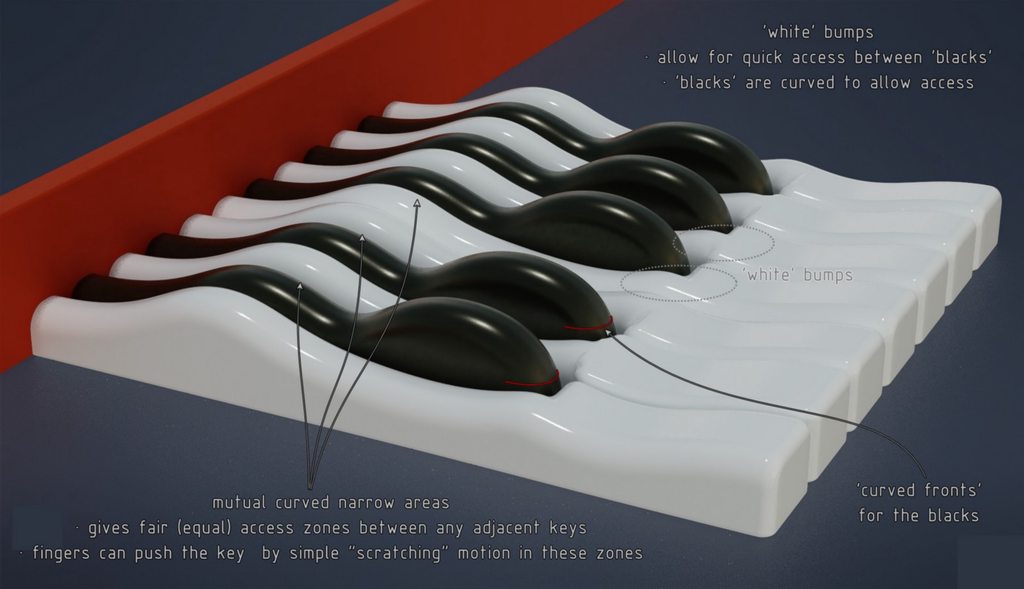
• some of the consideration about such a re-Design •
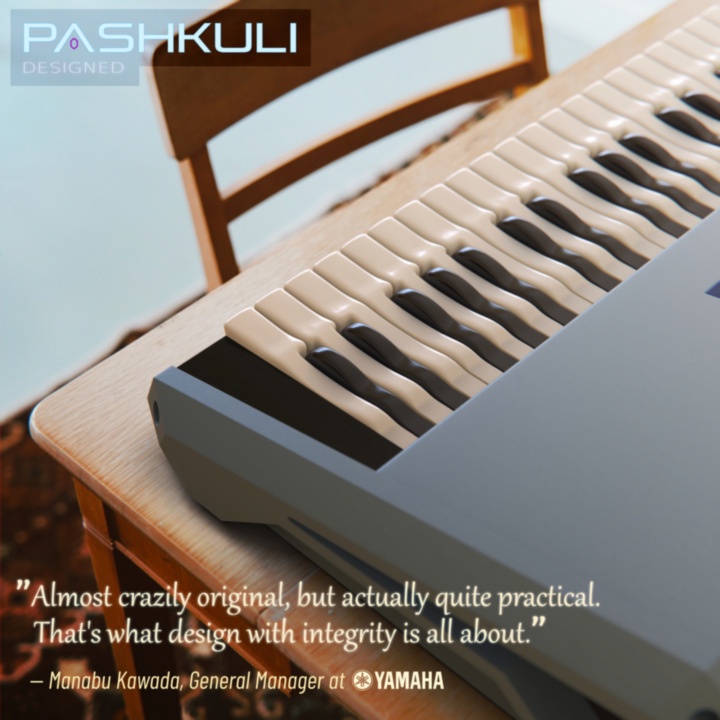
• …what can I say •
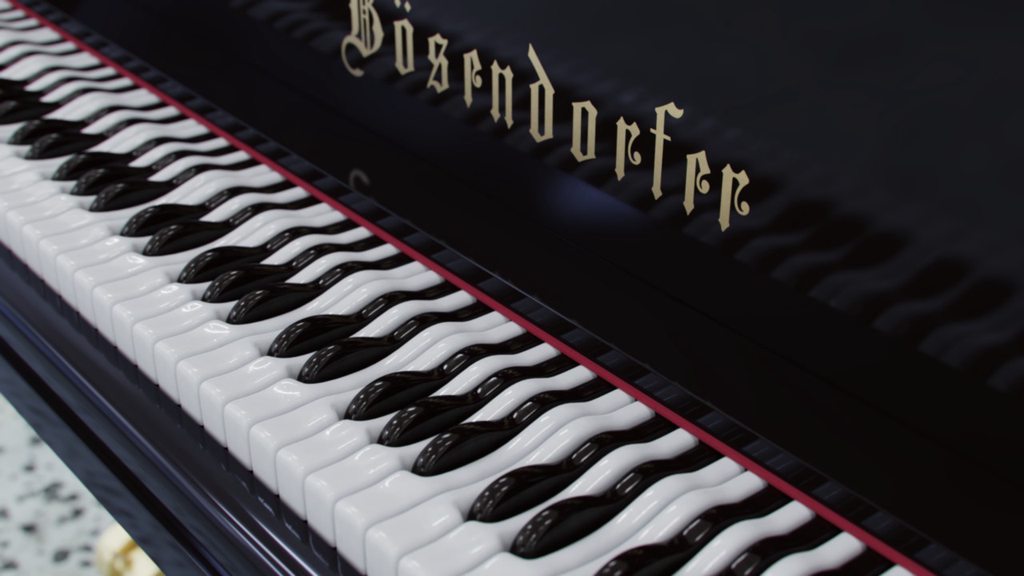
• a simple concept as a real grand piano keyboard •
The re-Design of the Uniform Piano Keyboard
• such keyboards are known as Jankó and Dreschke type of piano keyboards •
Well, we could include the Bayan accordion keyboard here as well but Bayans can have different interval layout structure between the rows of keys.
Generally, those uniform layout keyboards are known as 'Janko' because Paul von Janko managed to build a few of such keyboards, whilst Dreschke did not built any. I had seen Bayan keyboards of course, they are not a novelty but info about Jankó (1882) I first read on the Internet in 2010. His keyboard was definitely similar to the earlier Dreschke (1846) and Bayan (1830).
Jankó, being a Hungarian, as his friend and world renown pianist and composer Liszt, showed his keyboard to Liszt who got really impressed and wanted to have another piano playing career using that keyboard.
During the 20th century there were some few attempts at reviving Jankó but I found them to be a step back… or aside from the right direction. So, I did my re-Design of the Dreschke not so much Jankó but all inspired probably by the Bayan more or less. Not going to delve deep into the technical differences between Dreschke-Janko-Bayan as they are obvious for those interested in the subject. Here is my solution:
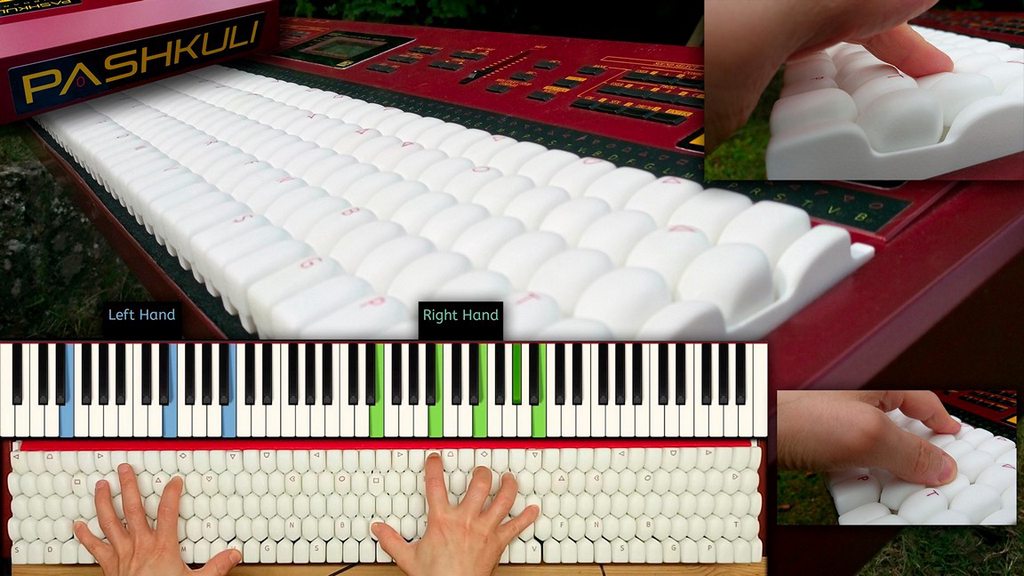
• an overall view of the Uniform re-Design compared to its Standard piano counterpart •
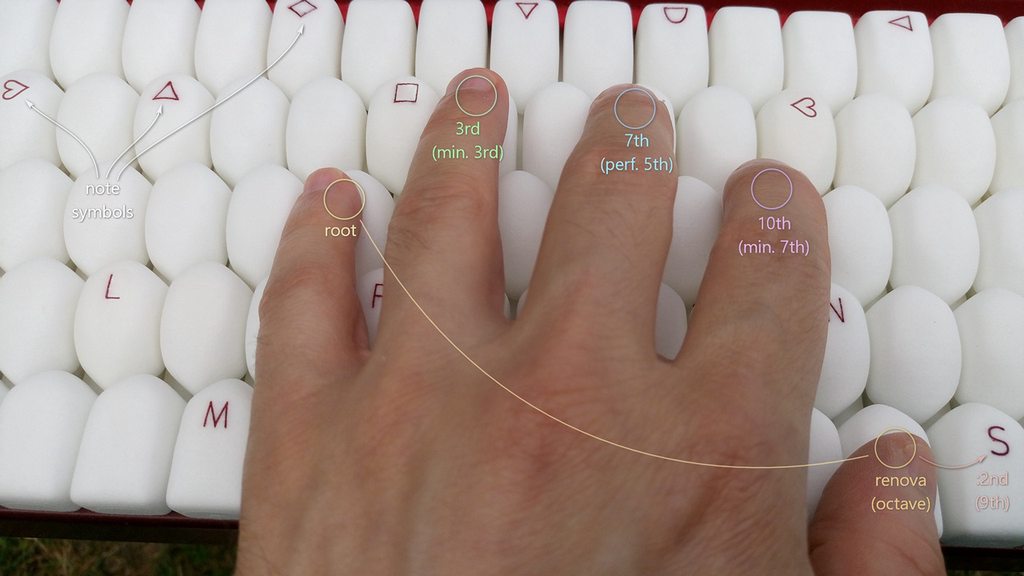
• it is all about the comfort of the human hand
• just put your calm hand on it and you got a chord as shown! •
• renova ("octave") span is 130mm

• ok, maybe a few technical info won't hurt… •
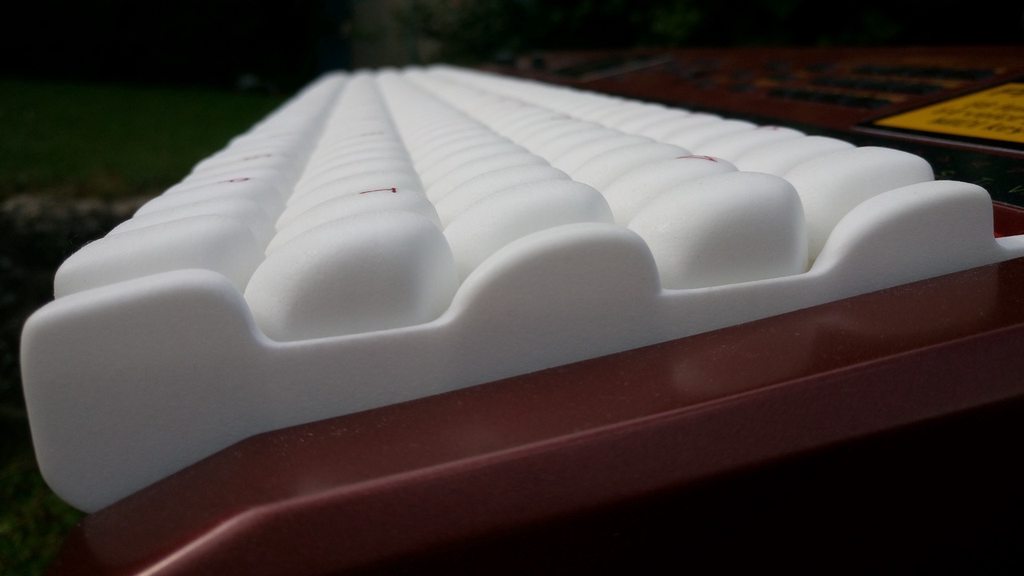
• side view of the PASHKULI Uniform piano keyboard •
This is an obscure topic and only intended as an introduction post to this forum. History of the piano as a musical instrument is huge as well. I hope this topic at least raised your curiosity in the subject and give you an idea what has been missed or left unsolved in the past few centuries. Not that it matters – many players are clueless about the reasons and state of the art. After all Mozart did not invent the Pianoforte. Bartolomeo Cristofori did. Chopin did not invent the 'escapement lever', Erard did. But piano players have the right to know about their instruments and eventually to have a choice when make informative decisions. At least a choice. We would like to accommodate the piano to the player as we all have different hand size (even when growing up). Certainly, piano (acoustic) is not a cheap musical instrument, but with its digital alternatives we have the advantage to make a choice.
And we have not even talked about the Music notation… although there is not a forum section about it as it is not about the piano, although its origin has been tightly connected to the piano.
But that is a completely separate discussion (you can find some of it in my 'Google Drive' in the links bellow). If you are interested and the admins allow it, I can start a topic about Music Notation. It is a great joy for me to discuss such problems with other musicians.
presentations (.pdf) work in progress
images (photos)
videos (not needed, watch my Youtube channel videos)
PASHKULI (YouTube channel)